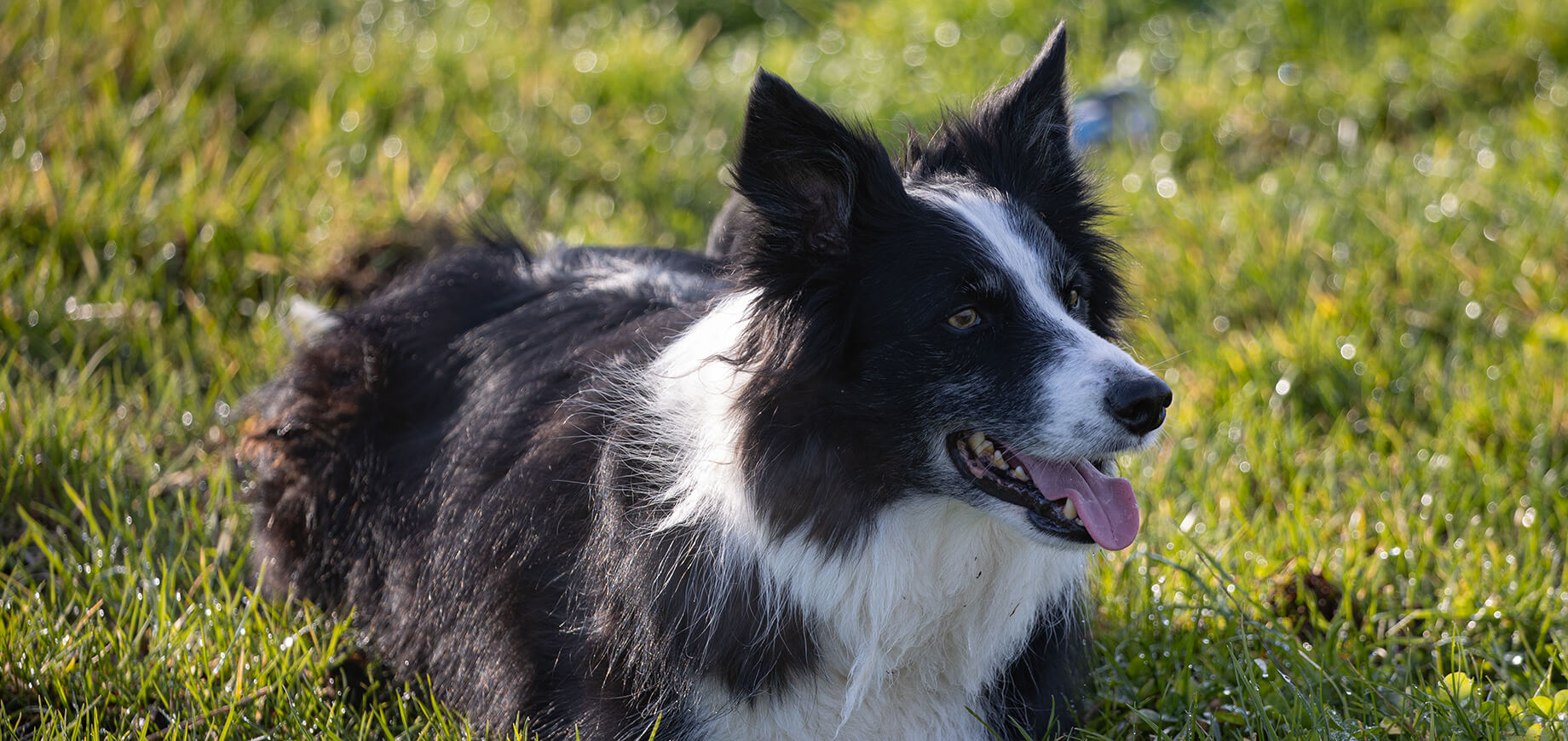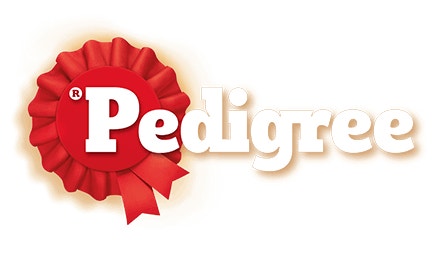

If you’re wondering ‘why do dogs pant?’, it’s important to remember that this is a normal and natural behaviour for them. Panting is when dogs take rapid breaths with their mouths open and could be for various reasons. Your dog may be trying to cool themselves down, due to hot weather or physical activity, or expressing feelings of excitement or stress. However, dogs also pant if they’re experiencing pain or discomfort, side effects of certain medications, or an underlying medical condition. This is why it’s crucial for dog parents to understand why their dog pants, so that they can seek veterinary help if necessary.
In this article, we explore the question ‘why do dogs pant so much?’ by addressing the different possible reasons. We advise dog parents on when the behaviour is normal or abnormal, as well as what they can do to help a panting dog. By being attentive to your dog’s panting behaviour and understanding its context, you’ll be able to know if it's excessive or worrisome and consult a veterinarian to rule out or diagnose an underlying health issue.
It’s normal for your dog to pant with their mouth open, as this is how dogs regulate their body temperature on a hot day or after physical exertion. It could also be your dog’s response to excitement, stress or fear. However, if it’s excessive or unusual, it may be a sign of pain or an underlying medical issue, in which case you should consult a veterinarian.
One of the main reasons why dogs pant is to recuperate themselves after they’ve engaged in physical activity. Unlike humans, dogs can’t sweat to cool themselves down. Instead, dogs regulate their body temperature by panting. By rapidly inhaling and exhaling air, the moisture on their tongue, in their nose and along the lining of their throat, evaporates. Known as evaporating cooling, this process is how dogs expel excess heat from their body and keep themselves comfortable.
Dogs also pant to exchange warm air from their lungs for cooler air in the environment, which also helps lower their body temperature. It’s normal for dogs to pant so much after physical exercise or play, as they need to prevent overheating by regulating their body temperature. Your dog’s age, general health, fitness levels, thickness of coat, as well as how vigorous their exercise was, will contribute to how heavy your dog pants. Your dog may pant so much after heavy exercise as it’s an efficient way for them to expel more heat quickly. Once they feel cooler, the intensity of their panting should naturally reduce and return to its resting rate.
Besides physical activity, dogs pant for many other reasons - including hot weather. Similarly to what we discussed above, dogs need to pant to regulate their body temperature and prevent overheating. This can be more difficult on particularly hot days, which is why dog parents should take precautions when walking dogs in hot weather. It’s also important to know how to cool down a dog, in case your dog’s body temperature rises rapidly and develops into heatstroke - we discuss this in more detail later.
However, if your dog pants when they’re not hot, it could be more linked to how they’re feeling. Your dog may be panting to express their excitement when spending quality time with you. On the other hand, if your dog is in an unfamiliar or uncomfortable situation, they could be panting due to stress, anxiety or fear. Dogs may pant at night if they feel stressed by a thunderstorm or fireworks display nearby. Or, if you’re wondering why your dog pants in the car, this could be because they’re both anxious and excited about where they’re going. Essentially, panting can be a way for dogs to cope with difficult feelings. Dog parents can determine if fear or anxiety is the reason why their dog pants by observing their dog’s body language, such as trembling, restlessness, dilated pupils as well as avoidance behaviour and increased comfort-seeking.
It’s essential that dog parents understand their dog’s usual behaviours, including their panting, so they can differentiate between normal and distressed panting. This is crucial for their well-being, as they can then support their dog if necessary. It’s helpful to keep track of your dog’s breathing rate at rest by counting the number of breaths per minute. This way, if you’re ever concerned about your dog’s breathing, you have a comparative measure. Another way to identify whether a dog’s panting is normal or not is to consider the surrounding context. If your dog has just been exercising or playing, or it’s a hot day, your dog’s panting is likely a normal response. However, if your dog pants without an obvious reason, there may be an issue.
Then, you can observe the pattern of your dog’s breathing and panting. While a dog usually pants to regulate their body temperature, it should usually subside once your dog has cooled down and rested. But if the panting continues and is excessive, rapid or irregular, it can be a cause for concern. This is even more worrying if there are other signs of distress or illness, such as limping, gastrointestinal problems, changes in appetite or other behaviours. While dog parents should learn how to manage a stressed dog, it’s essential to seek veterinary attention if you observe abnormal panting or concerning symptoms in your dog.
In some cases, the reason why your dog pants could be due to an underlying health concern. As we’ve discussed, dogs tend to pant so much when they’re feeling hot. This prevents dogs from overheating as it regulates their temperature. However, if your dog is feeling too hot, and their temperature has risen too high, there is a risk of heat stroke. Heat stroke can be a serious condition in dogs, and can be identified by symptoms such as heavy panting, excessive drooling, rapid heart rate, bright red gums, vomiting and diarrhoea, lethargy, seizures and even collapse. We provide advice on how to help a panting dog below, however, you should immediately consult with a veterinarian if you see any of these signs of heat stroke.
Dogs may also pant if they’re experiencing pain due to an injury or illness, as a way to communicate their distress. If this is the case, you may notice other behaviours, such as limping, whining or reluctance to move. It’s important to have your dog checked by a veterinarian if you’re concerned. On the other hand, if it’s an illness, you may notice your dog pants suddenly, continuously and without cause. This could be the case if your dog has a respiratory problem, as you would also notice heavy breathing alongside their panting.
How you can help a panting dog depends on the situation. If your dog is panting so much due to the heat, you can keep them safe by ensuring they have shaded and ventilated areas to relax, constant access to fresh and cool water and limit any strenuous exercise. You should also avoid walking your dog during the hottest hours of the day, especially as the pavement could burn their paws, and choose a walking route with grassed areas.
On the other hand, if your dog pants when not hot, it could be due to stress. In this case, it’s important to create a calming environment for them. You can create a safe space with their favourite toys and blankets, comfort them with petting and soothing words, and create positive associations with their triggers. It’s helpful to work with a dog trainer to support a distressed dog.
While it’s reassuring for dog parents to know that the reasons why dogs pant are often normal and not concerning, it’s vital to understand in which situations their panting may be abnormal. Learning more about your dog’s behaviours is key to looking after their overall well-being. You can also support your dog’s health by serving Pedigree® Dog Food, crafted with high-quality ingredients to ensure your dog receives essential nutrition in a complete and balanced diet.

